Technology
Sony Bravia 7 TV review: superb brightness and color, but…
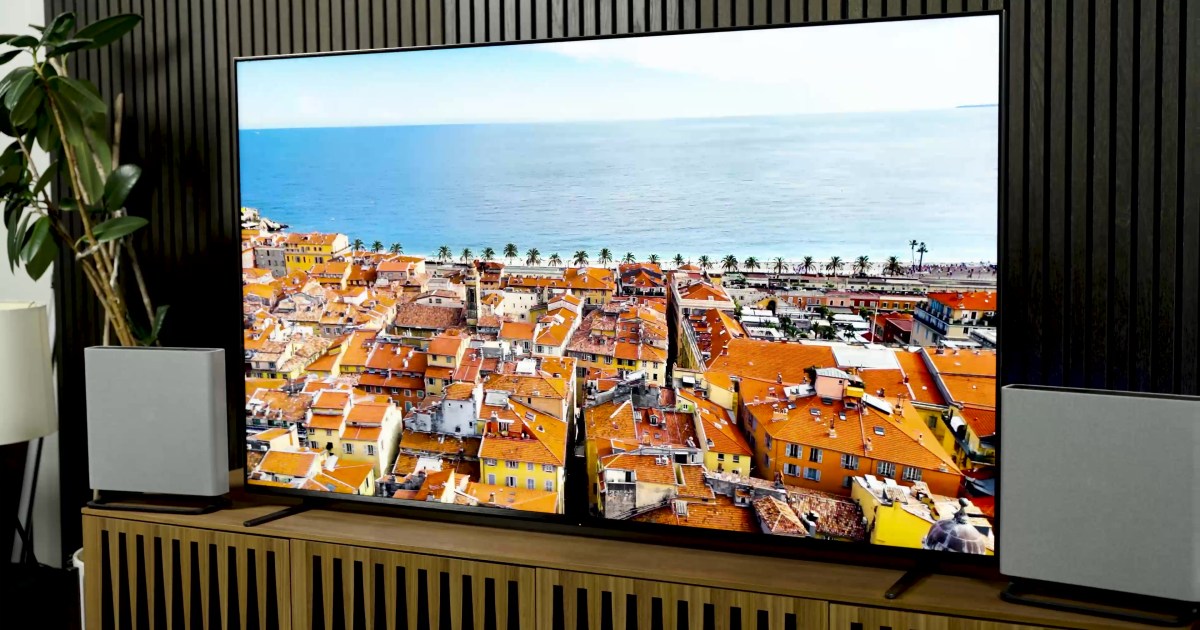

Sony Bravia 7
MSRP $2,299.00
Pros
- Bright and vivid
- Excellent black levels/contrast
- Extremely accurate HDR/Color
- Top-tier motion/upscaling
- Easy to use
Cons
- Limited viewing angle
- Poor reflection handling
The Sony Bravia 7 is a popular TV. It’s a mini-LED TV that, while still fairly expensive, costs far less than the flagship Bravia 9. And because it’s a Sony TV, we can expect that it will be pretty awesome. And in many ways it is.
But it’s also a curious TV. I don’t know if I’ve ever reviewed a TV that aced so many exams and yet still had to fight for my recommendation.
In most ways, the Bravia 7 is a big upgrade over last year’s Sony X90L. And while it isn’t quite the aggressive performer that Sony’s set-up Bravia 9 is? It is indeed an awesome TV.
Yet, the number of people I’m going to recommend the Bravia 7 to is … well, relatively small.
How do we square that up? Let’s get into it.
Video review
Sony Bravia 7 specs
| Size | 55, 65, 75, 85 inches |
| Display type | Mini-LED |
| Backlight Type |
Full Array Local Dimming |
| Operating system | Google TV |
| Screen resolution | 4K |
| HDR support | HDR 10, Hybrid Log-Gamma (HLG), Dolby Vision |
| Refresh rate | 120Hz |
| Audio support | 7.1 channel linear PCM: 32/44.1/48/88.2/96/176.4/192kHz 16/20/24bits, Dolby Audio, Dolby Atmos, DTS, DTS Express, DTS-HD Master Audio, DTS-HD High Resolution Audio, DTS:X |
| Connectivity | 4 HDMI ports (2 HDMI 2.1), 1 LAN, 1 ARC, 1 RF Antenna, 1 Optical Digital Audio Output, 2 USB |
| Networking | Wi-Fi, Ethernet |
| Tuner | ATSC 3.0 |
Out of the box
Sony starts out with a big win. This TV is so easy to set up.
Not only can the feet be placed at multiple widths and at multiple heights, but when it comes to putting the feet into the TV, they just slot right in. You don’t have to screw them in. If you want enough height to accommodate the soundbar, you do have to adjust some screws in the feet. But most folks are gonna be able to get this TV out of the box, pop the feet into the bottom of the TV, and plug it in with minimal hassle and in record time.
Fit and finish
And the Bravia 7 looks and feels great, too. It has “class” written all over it.
Basic day-to-day use
Dig below the surface and you’ll find a TV that is super easy to use. Sony has created a customized UI that sits over Google TV that, at least for now, is my favorite among TV manufacturers (although, to be fair, I haven’t gotten to the new Panasonics that just landed in the U.S. so whether Sony remains my favorite, it’s easily better than the competition).
This TV is so easy to set up.
Of course, you can only spend so much time rooting around in the settings, which Sony tries to minimize by automating a lot of things. And the good news here is that this TV has run Google TV darn near flawlessly for me thus far. It looks like there was a problem getting custom picture settings to stick when the TV was in its basic mode, but that was fixed with a recent software update.
The remote — which isn’t backlit — is not rechargeable like the Bravia 9. But you will notice it looks a bit different. This isn’t a new finish, per se. That’s not paint splatter. The remote is now made with Sony’s SORPLAS recycled plastics material, which Sony now uses in a bunch of its products to lower its carbon footprint. That’s a yay, from me, for the planet.
The ins and outs
TV enthusiasts already know this, but Sony doesn’t make its own system on chip (SOC), although it does program that chip with its secret sauce. But that SOC is part of a whole board that includes the inputs and outputs. That means that you only get two HDMI 2.1 inputs, and one of those is the eARC port, which for a lot of folks will be taken up by a soundbar or A/V receiver. Sony would very much like you to occupy that port with an HDMI cable leading to its Bravia Theater Quad system (a move I whole-heartedly endorse, by the way). This isn’t going to be a problem for most folks. But for anyone with both the latest Xbox and latest PlayStation, or one of those consoles and a gaming PC they want to hook up … only one of those devices can connect to the TV for full-on 4K 120Hz gaming.
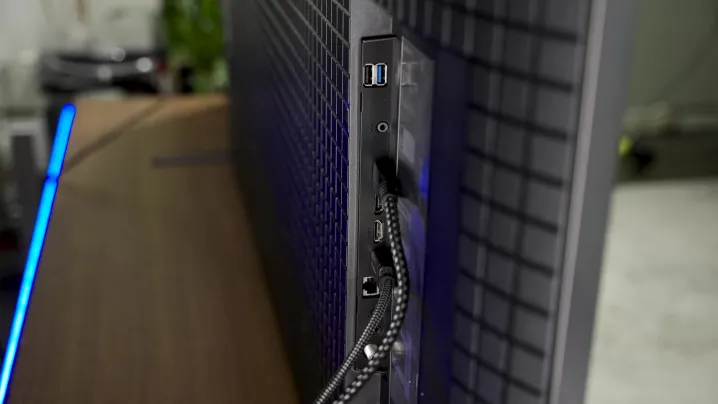
But don’t yell at Sony about this. Yell at MediaTek to make a next-gen SOC with four HDMI 2.1 inputs and a chip that is more or less the same as the Pentonic 1000 so Sony doesn’t have to rewrite all its code (again) and we don’t have to suffer the growing pains with Sony (again) just to have four HDMI 2.1 inputs.
Sound quality
For sound quality, the Bravia 7 gets a thumbs up from me. However it’s not two enthusiastic thumbs up — like I’ve been giving some of Hisense’s TVs — but one well-earned thumbs up for crystal clear sound with good balance and reasonably high fidelity. It’s a little light on bass and presence, but these days, if voices sound intelligible, it gets my nod of approval.
Like the X90L, the sound is not good enough for me to want to set up Sony’s acoustic center sync with the Bravia Theater Quad. The Theater Quad’s phantom center is very convincing, and the Bravia and TV’s speakers will only be a distraction. So skip it.
Picture setup tips
Before getting into picture quality, I’ll share an interesting experience I had when getting this TV ready for evaluation. On Sony TV’s, I instantly switch the picture mode to “professional” and make adjustments from there. This means the TV is going to be dialed in for its most accurate picture — not necessarily its most bright, but that’s easy to adjust. I’m used to seeing a dimmer picture in SDR when choosing professional mode, but in the case of the Bravia 7, even in its out-of-the-box standard picture mode, cinema mode, and professional mode, the SDR picture seemed really dim. So if you get this TV, expect to make adjustments to taste.
A step further on this: The Bravia 7 counts a Prime Video calibrated mode as well as a Netflix calibrated mode among its features. And while it’s cool that these picture modes are available, I don’t support them being turned “on” by default. Turns out, this was Amazon Prime Video’s decision — not Sony’s — and it’s a problem for Sony TV owners.
Many of you will be happiest with the local dimming setting on “high” and the peak brightness setting on “high.” You can then evaluate whether to boost the brightness level. The TV may seem dim out of the box, but don’t worry: This TV has all the brightness you need and want, and then some. You just need to do a little work for it.

Also, I got a software update while I was reviewing the Bravia 7 — one that I think also went out to the Bravia 9. The description promises to fix, among other things, “an issue where the screen brightness may increase when subtitles are shown.” So, make sure to check for an update when you set up this TV. It should be applied automatically during initial setup, but, as I like to say from time to time: trust, but verify.
Numbers for Nit Nerds
If you are a Nit Nerd, then you already know that this TV is gonna ace almost every measurement, right? It does. But, as usual, we’ll start with brightness, which is where most of the interesting results came in anyway.
I can’t recall what this TV’s default SDR brightness setting was in professional mode — it may have been 20, but by the time I got started on it, it was up at 30. Regardless, I have numbers for the brightness set at 20, 30, and 50 with all other settings at default, which means that local dimming was at medium and peak brightness was off.
At a setting of 20, SDR peak brightness on the Bravia 7 was 265 nits. At 30 it was 375 nits. At a maxed-out 50, it measured 522 nits, which is fairly bright, but far lower than I was expecting. After turning the peak brightness and local dimming to high, I reached the 1,800 nit territory — which is absolutely insane. (I like that Sony gives you a broad range of control to dial the TV in just how you need it to be.)
White balance came in excellent. It was a little hot on the red, but that is easily fixed with a couple of clicks in the 2-point white balance menu. Stock professional mode came in with a max delta E at about 2. Respect.
It was a similar story with the 20-point grayscale. Excellent performance in the pro mode. Only the brightest whites were above a delta E of 2, and only by a touch. More respect.
The Bravia 7’s picture quality is superb.
All colors in the color gamut test were under a delta E of 2. And the very challenging color-checker test? The Bravia 7 aced it, with a max delta E of 3.8 and an average of 1.8 — that is awesome for a stock picture mode.
Color saturation and luminance tests in SDR were also aced.
When it comes to HDR (and I may have already spoiled the peak brightness news), in a 10% window it was around 1,900 nits — it was testing 2,000 nits at one point. Bumping the window size up or down brought the peak brightness number down, often closer to 1,600 nits for me, and 1,300 at default settings, and full screen brightness can be as high as 700 nits.
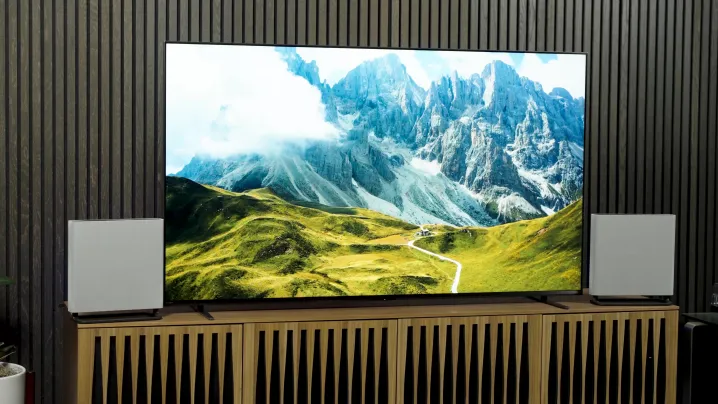
A real-life HDR test shows peak HDR highlights are probably hanging out closer to 1,100 nits, which is enough to accurately reproduce most of the HDR content you can lay your eyes on.
The Bravia 7 follows the EOTF curve like a true champion — about as perfect as it gets. You can choose picture modes that overbrighten HDR if you want, though. But, in a professional mode, this is what you wanna see. Mad respect.
The HDR color checker is also super impressive. It is so rare to see a TV get all of these right. (Sony continues to be the standard setter for color accuracy, and I am here for it!)
DCI P3 color gamut coverage came in at 97% — a passing grade, but expected. And BT-2020 coverage came in at a delightful 80%, which is great for a mini-LED TV — although a reminder: the Hisense UX hit 83%.
One other nit-nerd specific thing. I checked the Bravia 7 for near-black chrominance overshoot, which seems to be a known issue on some other Sony TVs that use the Pentonic 1000 SOC, like the A95L and Bravia 9. There may be a little here, but I really struggled to see it.
Picture quality
Here’s what you need to know about the Bravia 7’s picture quality, starting with the good stuff and ending with two problematic things.
In short, the Bravia 7’s picture quality is superb. It’s so clean and crisp, and vibrant and accurate. The colors just look right, even without a frame of reference. (I know a Sony picture the instant I see it, and the Bravia 7 has all that swagger.) Sure, the Bravia 9 is technically better, but most folks likely wouldn’t see the difference even when it’s pointed out.
The Bravia 7’s picture quality is noticeably better than the Hisense U8 and TCL QM8. And, I would put it above the Samsung Q90D in several respects as well.
Let’s break the picture quality down:
Brightness
The Bravia 7’s brightness capabilities are stunning. By the numbers, it doesn’t measure as the brightest TV — that honor goes to the Hisense U8 and TCL QM8. But in real life, the perceived brightness of this TV is right on par with those other light cannons. It’s truly incredible — when TV is set up to do it.
Contrast
The backlight control on this TV is very good. I sometimes wish it were a little more speedy so that any visible halo following objects moving around the screen disappeared faster. But that’s when I’m looking for that kind of error. When I relax and just enjoy content and get caught up in the story? I notice none of that. And neither will most of you. Again, the Bravia 9 is technically better, but the Bravia 7, with fewer zones, beats most of its mini-LED competition for real-life viewing.
Any halo or blooming is barely visible from dead-on. However, off-axis is another story. But black levels and contrast are superb. The one caveat: slight noise in super dark blacks. They aren’t crushed, but you get a little noise and banding in really challenging dark scenes.
Color
When it comes to color, and SDR and HDR? The Bravia 7 is an A++++++++++++++. Valedictorian. Magna Cum Laude. Sony wins, period.
Motion
As for motion, Sony is the king. LG is not far behind. Panasonic, I suspect, will give Sony a run for its money, but Sony’s processing helps ensure it is the best at motion.
Upscaling
Sony’s upscaling and low bitrate content clean-up is as good as it gets. Again, LG is close. But you aren’t going to do better than Sony. Upscaling 720p is hard — and even the great Sony can only do so much — but again, nobody else does it better.

Gaming
I’m a very casual gamer. I don’t care about 144Hz. I do care about getting VRR just because I want that feature, but most of the games I play don’t offer it. I’m playing 4K/60 most of the time, and that suits me just fine.
The cons: off-angle performance and reflection handling
Now for the bad news. The off-angle performance is not good. I’ve been willing to forgive much less expensive TVs here, but this expensive Sony Bravia 7 doesn’t get that pass. Samsung is out there with some awesome off-angle viewing tech. Sony, you can do it too. Please do.
For anyone out there who wants to criticize Sony for not using an ADS Pro panel, understand that, as far as I’m aware, BOE, the top provider of ADS Pro panels — like the one you see in some Hisense 75-inch models — is only available in 75 and (I think) 85-inch sizes. So, ADS Pro and its naturally superior off-angle viewing, while still maintaining good contrast and color, is not an option for the 65-inch size. And it could be that Sony is not a fan of that panel for other quality reasons, which is why we may not see it used in the 75- and 85-inch versions of this TV.
But, an off-angle improvement filter is something I would like to see on a TV like the Bravia 7.
For now. If you have a big enough screen size of the Bravia 7 TV, it may not be a problem. But if you are serving a big room with a sectional couch using a 65-inch TV, the folks on the side seats will get a washed-out picture. Actually, you don’t have to be that far off to the side for the picture to suffer. That’s why I am so disappointed.
Also, the anti-glare, anti-reflection treatment on this TV? It has me bewildered, because I can see there is something in use here but it doesn’t seem like it is doing much. Anything that is illuminated behind you — not just direct light sources — is going to show up on the screen when viewing medium to dark scenes. This TV can get bright enough to battle back ambient light, but I can’t stand behind it as a daytime living room TV when it is a dark mirror like this. I’m pretty bummed about that.
One other annoyance. I know the professional mode is meant to act like filmmaker mode — that it is meant to be viewed in a pitch-black room and express the creator’s intent. But I feel like sometimes this TV is too dark. Dolby Vision Dark is especially trying. It seems like the average picture level is too low. My experience doesn’t square up with the measurements and it is too dim too often. I rarely settle on Dolby Vision Bright because it lifts the brightness across the board. But on this TV I have to, because Dolby Vision dark is just unwatchable for me.
Final verdict
The off-angle performance and the poor reflection handling are two big hits for a TV at this price — and it is super frustrating given that nearly every other performance point on this TV is just state-of-the-art awesome, bar-setting quality. Otherwise the Bravia 7 is so, so, so good. And just enjoyable. You don’t have to be an enthusiast or purist to see how awesome the picture is — all in a really attractive package with an easy-to-use experience built in.
But, at the end of the day, I feel like this TV belongs in dedicated entertainment spaces where light control is built in and other accommodations can be made for the reflective screen. And sadly, that makes for a pretty niche group of folks for whom this TV would be my top recommendation. The average American living room is just not the right spot for this TV, I think.
However, if you’re looking for a killer TV for your entertainment room, home theater, or game room, the Bravia 7 is superb. It’s a step up for Sony, and I’m glad they made it (well, I’m glad with 90% of it).
Technology
Don’t let these 3 October 2024 hidden streaming movie gems fly under your radar


October is finally here, which means horror lovers can rejoice in everything that spooky season will bring. Luckily for them, there’s no shortage of content available to stream. The best horror movies on Hulu, Netflix, and pretty much every other major service will offer more than enough chills to satisfy those well-versed in the intricacies of the genre and those who are only looking to experience it because of the season.
However, while watching more mainstream offerings is perfectly OK, October also offers the chance to watch other, more underappreciated efforts. From genuinely terrifying tales of dread to more psychological series that favor atmosphere and gloom, these underrated horror gems will be perfect to watch in the days leading up to Halloween. So grab your popcorn and put on your witch hat because these movies call for it.
Witchfinder General (1968)

Horror legend Vincent Price stars in the 1968 seminal folk horror film Witchfinder General. Based on the eponymous 1966 novel and set during the English Civil War, the film follows the exploits of infamous witch-hunter Matthew Hopkins, who brags about receiving the title of “witchfinder general” despite never receiving an appointment from Parliament. After Hopkins targets the wrong woman, he becomes the subject of a young soldier’s wrath.
Witchfinder General‘s importance to horror is impossible to ignore. Quite possibly the first folk horror film in history, Witchfinder General, which was later retitled to The Conqueror Worm in the U.S., finds terror in the very real danger of fanaticism and weaponized hysteria. The film preys on very real fears to craft a tale of paranoia, power lust, and indoctrination, using the mighty Vincent Price to deliver its message.
The actor was seldom better than he’s here as Matthew Hopkins, an utterly despicable and truly chilling figure that ranks among his finest on-screen creations. The ending will surely haunt audiences’ nightmares for days, making Witchfinder General a perfect watch for horror fans.
Witchfinder General is available to stream on PlutoTV.
The Company of Wolves (1984)

When one thinks of the fantasy genre, chances are that images of knights, dragons, and wizards come to mind. Hardly anyone would expect one of the best fantasy movies to be a dark and dreadful fairy tale, yet that’s exactly what Neil Jordan’s The Company of Wolves is. This gothic tale, inspired by the classic Little Red Riding Hood, follows young Rosaleen (Sarah Patterson), who dreams of traversing a wolf-infested forest to reunite with her grandmother. When she meets a mysterious hunter in the woods, her life changes for good.
The Company of Wolves is an exquisite and lush Gothic story that shows a new side to horror. Blending disturbing scenes with straight-up body horror and fantasy sensibilities, the film offers a thoughtful and oneiric tale of sexual awakening, self-discovery, and the treacherous, ever-changing human nature that drives our actions.
Equal parts traditional fairy tale and off-putting and occasionally revolting horror story, The Company of Wolves is packed with meaning in every shot, brought to life by an absorbing production design that brings a dark yet alluring forest to unbelievable life.
The Company of Wolves is available to stream on Tubi.
You Won’t Be Alone (2022)

Stories about witches are at the very foundation of the horror genre; luckily, modern cinema keeps delivering new and incredible versions of a well-known tale — for example, 2022’s You Won’t Be Alone. Starring an ensemble cast, including Noomi Rapace and Alice Englert, the film follows Nevena, a mute girl in 19th-century Macedonia who is captured by a witch and transformed into a shapeshifting witch herself. Alone in the world, Nevena adopts new identities on her way to discovering everything life has to offer.
You Won’t Be Alone is light on jump scares, preferring instead to build an atmosphere of mystery, anxiousness, and fear that dominates every scene. Like the best horror movies, it uses traditional horror and supernatural settings to tell a deeply humane story about self-discovery and the complicated, winding, and painful road to maturity, both physical and emotional.
Nevena’s tale is universal yet still profoundly intimate, brought to life by an excellent collection of actors who act as observers of the human condition. Silent but packed with meaning, You Won’t Be Alone is a thoughtful and thought-provoking entry into the so-called elevated horror movement.
You Won’t Be Alone is available to stream on Starz.
Technology
Ulefone Armor Mini 20 Pro & Mini 20T Pro run various performance tests
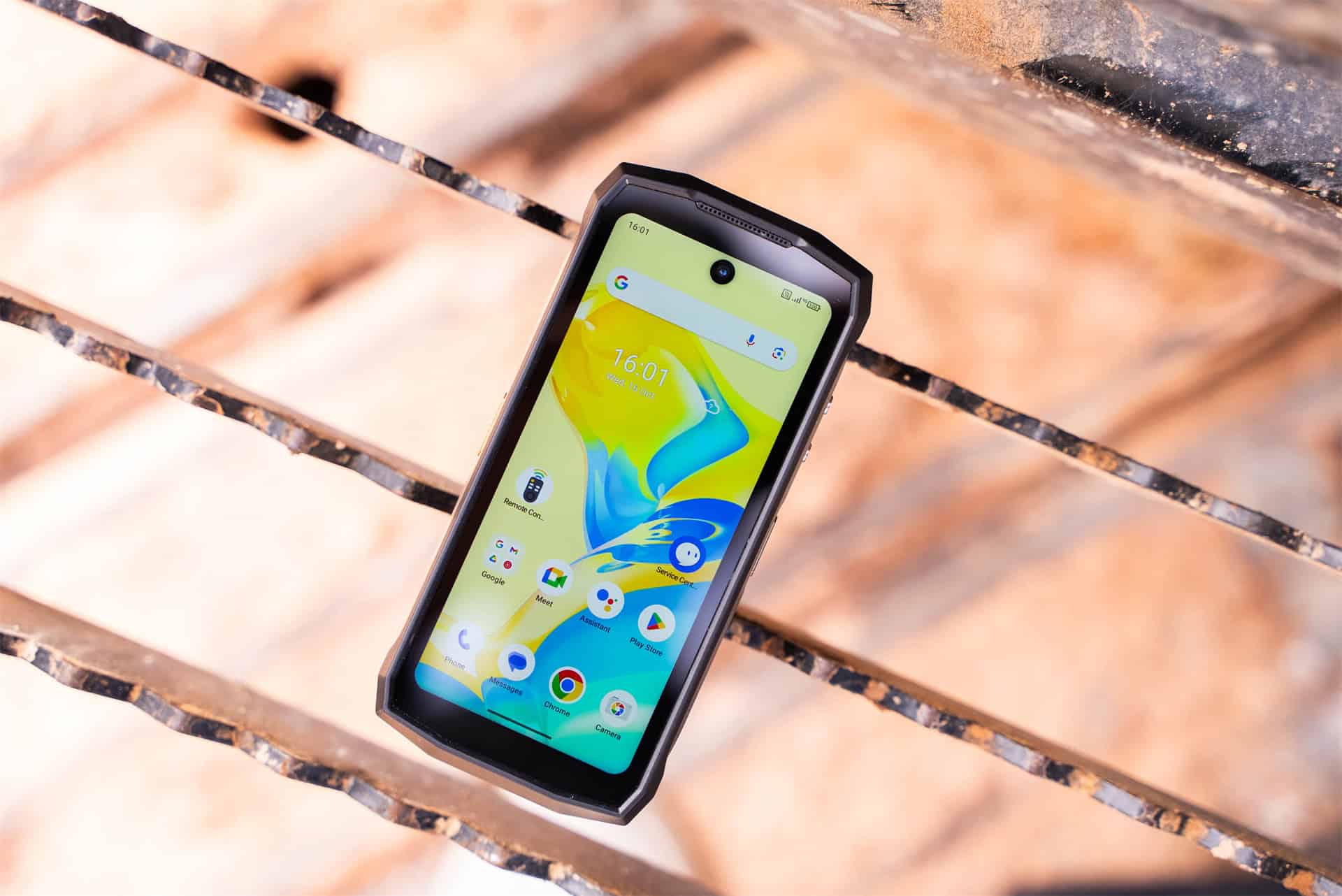
Ulefone recently announced the Armor Mini 20 Pro and Armor Mini 20T Pro smartphones, and the company has ran a bunch of performance tests on them. These two handsets are small rugged devices, which makes them rather unique.
The main difference between them comes to thermal imaging tech. The ‘T’ version has thermal imaging tech, while the other phone does not. It tries to compensate for that with an infrared camera, though.
The Ulefone Armor Mini 20 Pro & Mini 20T Pro go through several performance tests
Ulefone ran AnTuTu, Geekbench 6, 3D Mark, and Speedtest tests on the devices. The two phones have the same performance-related specs and software, so the results should be identical, which is why only one is shown in the video below.
The Ulefone Armor Mini 20 Pro series managed to reach 434,964 points on the AnTuTu benchmark. Speaking of which, the phone is fueled by the MediaTek Dimensity 6300 SoCo. It also comes with 8GB of RAM; which can be expanded to 16GB via virtual RAM.
In regards to the Geekbench 6 score, the device managed to reach 791 points in the single-core test, and 2,102 in the multi-core test. That’s per course for the MediaTek Dimensity 6300 processor.
In the 3DMark Wild Life test, the phone score 1,379 points. The only test that remained is the 5G Speed Test, that one will depend on the 5G speeds in your area, and with your carrier, of course. Ulefone managed to reach 192Mbps download, and 25.7Mbps upload speeds, though.
These phones use a tiny display, and a large battery
It’s also worth noting that both of these smartphones are IP68/IP69K and MIL-STD-810H certified. They’re rugged phones with a large battery (considering their size). They include a 4.7-inch display and a 6,200mAh battery pack.
Android 14 comes pre-installed, while a 50-megapixel main camera sits on the back. The Ulefone Armor Mini 20T Pro will be priced at $329.99, while the Armor Mini 20 Pro costs $249.99. They’ll go on sale on October 21 via AliExpress. The company is also running a giveaway, in case you’re interested.
Technology
DJI confirms that US customs is holding up its latest consumer drone
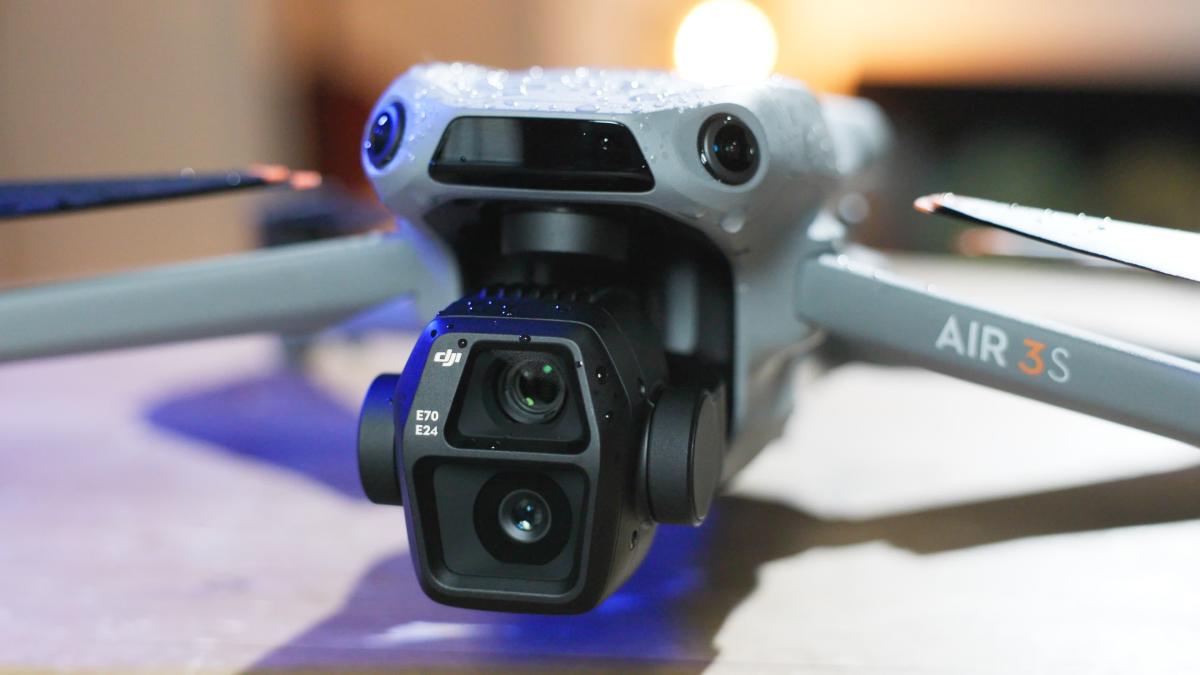
Many of DJI’s drones including its latest consumer products are being held up at the US border, the manufacturer said in a blog post today. It appears to be a customs matter and not related to proposed US legislation to ban DJI products (the Countering CCP Drones Act) currently in US Congress. However, the holdup means that sales of DJI’s latest Air 3S drone will be delayed, the company told The Verge.
“The U.S. Customs and Border Protection (CBP) has cited the Uyghur Forced Labor Prevention Act (UFLPA), as the reason for the current holdups,” the DJI ViewPoints team wrote. “This assertion made against DJI, however, is entirely unfounded and categorically false.”
Calling the situation a “misunderstanding,” DJI said it’s sending documentation proving it complies with the UFLPA. It added that it has no manufacturing facilities in and doesn’t source materials from Xinjiang, the region that’s a red flag for the US in terms of Uyghur forced labor violations. It also noted that it’s not a listed entity under UFLPA and that its supply “undergoes rigorous due diligence by respected US retailers.” US Customs and Border Protection has yet to comment on the matter.
While the US House of Representatives did pass the a bill to block DJI’s drones, the Senate removed that clause from the 2025 National Defense Authorization Act. It was later re-introduced as an amendment, though, and could still make it into the final bill. If so, imports of new DJI drones could be blocked, but a ban wouldn’t likely prohibit current owners from using them. DJI has a massive share of the worldwide drone market upwards of 70 percent as of 2021, according to Statista. including as much as 90 percent by public safety officials.
Science & Environment
Crude oil prices edge higher after four-day losing streak


Crude oil futures rose slightly Thursday after a four-day losing streak as fears of a supply disruption in the Middle East eased and a surplus looms over the market next year.
Although Israel has held back from retaliating against Iran so far, the situation “could change at a moment’s notice,” said Aditya Saraswat, Middle East research director at Rystad Energy.
“In a widespread regional war scenario, Iran and Israel’s conflict could severely impact gas exports and lead to delays in oil development projects,” Saraswat said in a note Thursday.
Here are Thursday’s energy prices:
- West Texas Intermediate November contract: $70.40 per barrel, up 1 cent, or 0.01%. Year to date, U.S. crude oil has fallen down nearly 2%.
- Brent December contract: $74.24 per barrel, up 2 cents, or 0.03%. Year to date, the global benchmark has declined more than 3%.
- RBOB Gasoline November contract: $2.0358 per gallon, down 0.22%. Year to date, gasoline has pulled back more than 3%.
- Natural Gas November contract: $2.374 per thousand cubic feet, up 0.3%. Year to date, gas has declined more than 5%.
Israel has reportedly told the U.S. that it will refrain from hitting Iran’s oil facilities in retaliation for the Islamic Republic’s Oct. 1 ballistic missile attack. The oil market sold off steeply Tuesday on reports that Israel will limit its strike to military targets in Iran.
An attack on oil facilities, however, could disrupt 1.4 million bpd of Iran’s production, Saraswat said. A full-blown war could lead to Iran choking the Strait of Hormuz, jeopardizing 12 million bpd of oil and “driving up prices sharply,” the analyst said.
Technology
Accel eyes stake in India’s Truemeds at $330 million valuation

According to half a dozen sources, Accel, the global venture firm, is in advanced discussions to lead a funding round of $30 million to $40 million in Truemeds, an Indian online pharmacy that’s focused on providing customers with more affordable generic alternatives to costly branded medications.
The talks are currently centered on a proposed valuation of about $330 million for the six-year-old, Mumbai-headquartered startup, per these same sources, who requested anonymity as the deliberations are ongoing and private.
The deal hasn’t finalized, so it may still not materialize or the terms can change, the sources cautioned. Accel and Truemeds didn’t immediately respond to requests for comment.
The potential round for Truemeds comes amid a period of consolidation and upheaval in the online pharmacy industry. Pharmeasy, backed by Prosus Ventures, has seen its valuation plummet from a peak of $5.6 billion to below $600 million after struggling to repay a loan to Goldman Sachs.
Janus Henderson, the British American global asset firm, implied a valuation of about $458 million for Pharmeasy at the end of June, according to its most recent mutual fund disclosures. In 2021, Tata Digital acquired 1mg, another major player in the space.
Unlike its competitors, Truemeds is taking a slightly different approach. The startup aims to disrupt the supply chain of how medicine reaches customers, eliminating middlemen that inflate the final price. After customers upload their prescriptions, Truemeds doctors recommend generics with the same active ingredients, produced by Indian manufacturers. This service aims to reduce medication costs, particularly for those with chronic conditions requiring ongoing treatment.
The platform operates entirely online, with consultations, ordering, and delivery all handled digitally. This eliminates the need for patients to visit physical pharmacies and allows Truemeds to reach customers in remote areas.
If the new funding materializes, it would more than double Truemeds’ valuation, which was $132 million in an extended Series B round last year. The startup originally raised the Series B funding from investors including WestBridge Capital and Info Edge Ventures at a valuation of $76.7 million, according to Tracxn, a venture insight platform.
Science & Environment
Helene, Milton losses expected to surpass “truly historic” $50 billion each
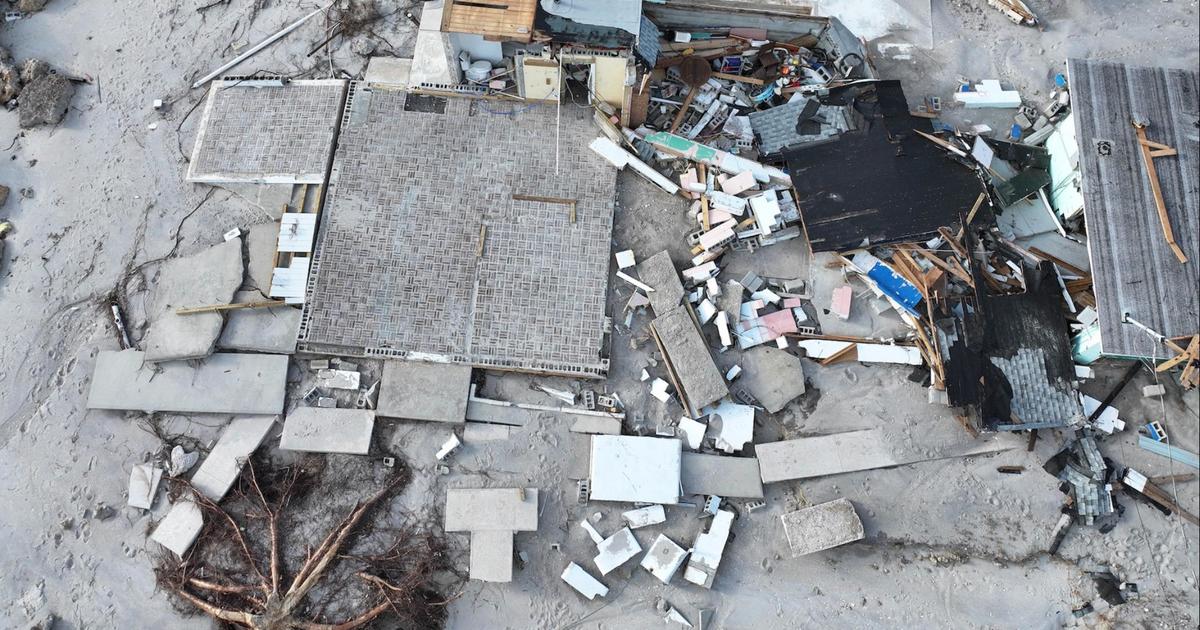
Monstrous hurricanes Helene and Milton caused so much complex havoc that damages are still being added up, but government and private experts say they will likely join the infamous ranks of Katrina, Sandy and Harvey as super costly $50-billion-plus killers.
Making that even more painful is that most of the damage – 95% or more in Helene’s case – was not insured, putting victims in a deeper financial hole.
Storm deaths have been dropping over time, although Helene was an exception. But even adjusted for inflation, damages from intense storms are skyrocketing because people are building in harm’s way, rebuilding costs are rising faster than inflation and human-caused climate change are making storms stronger and wetter, experts in different fields said.
“Today’s storms, today’s events are simply vastly different from yesterday’s events. One of the things that we’re seeing is the energy content that these systems can retain is significantly greater than it used to be,” said John Dickson, president of Aon Edge Insurance Agency, which specializes in flood coverage. “The weather seems to be, in many cases, moving faster than we as a society are able to keep pace with it.”
In the last 45 years, and adjusted for inflation, the National Oceanic and Atmospheric Administration has counted 396 weather disasters that caused at least $1 billion in damage. Sixty-three of those were hurricanes or tropical storms.
The $50 billion mark for direct losses is a threshold that differentiates “truly historic events,” said Adam Smith, the economist and meteorologist who runs the list out of NOAA’s National Center for Environmental Information in Helene-hit Asheville, North Carolina.
Only eight hurricanes reached that threshold. Smith said he thought Milton and Helene have “a very good shot” of joining that list.
The first $50 billion hurricane was Andrew in 1992. The U.S. went 13 more years before Katrina topped the damages chart, then seven years until the third costly whopper, Sandy. Helene and Milton would make seven in the last seven years.
Calculating damages is far from an exact science. The more complex and nastier storms are – like Milton and Helene – the longer it takes, Smith said. Damage is spread over different places and often a much larger area, with wind damage in some places and flood damage elsewhere. Helene, in particular, caused widespread flooding and in places not used to it. Estimates for those storms from private firms in recent days vary and are incomplete.
There’s three categories of damage: insured damage, uninsured damage and total economic cost. Many risk and insurance firms only estimate insured losses.
Homeowner insurance usually covers wind damage, but not flood. Special insurance has to be bought for that. Flood insurance coverage rates vary by region and storms differ on whether they cause more wind or water damage. Helene was mostly water damage, which is less likely to be covered, while Milton had a good chunk of wind damage.
Of the top 10 costliest hurricanes as compiled by insurance giant Swiss Re – not including Helene or Milton yet – insured damage is about 44% of total costs.
But with Helene, Aon’s Dickson estimated that only 5% of victims had insurance coverage for the type of damage they got. He estimated $10 billion in insured damage so doing the math would put total damage in the $100 billion to $200 billion range, which he called a bit high but in the ballpark. Insured losses for Milton are in the $50 billion to $60 billion range, he said.
With Helene, Swiss Re said less than 2% of Georgia households have federal flood insurance, with North Carolina and South Carolina at 3% and 9%. In North Carolina’s Buncombe County, where more than 57 people died from Helene’s flooding, less than 1% of the homes are covered by federal flood insurance, the agency said.
Risk modeling by Moody’s, the financial services conglomerate, put a combined two-storm total damage estimate of $20 billion to $34 billion.
Karen Clark and Company, a disaster modeling firm that uses computer simulations superimposed on storm and insurance data, wouldn’t give total damage estimates for the storms. But the company figured insured losses alone were $36 billion for Milton and $6.4 billion for Helene.
“The economic losses are going up because we’re putting more infrastructure and housing in harm’s way,” said University of South Carolina’s Susan Cutter, co-director of the Hazards Vulnerability and Resilience Institute, who added that climate change also plays a role. “Human losses and deaths are going down because people are being a little bit more vigilant about paying attention to preparedness and getting out of harm’s way.”
Much of the damage is because of flooding. Studies show that hurricanes are getting wetter because of the buildup of heat-trapping gases from the burning of coal, oil and gas. Basic physics dictates that clouds hold 4% more moisture for every degree Fahrenheit, and that falls as rain.
“There is scientific agreement that floods and flooding from these hurricanes is becoming more frequent and more severe. So it is likely that we’re going to be seeing a higher frequency of storms like Helene in the future,” said Karen Clark, who founded her namesake firm. “It’s not really an insurance issue because it’s not privately insured. This is really a societal issue and political question. How do we want to deal with this?”
Clark and several of the experts said it’s time for society to think about where it builds, where it lives and if it should just leave dangerous areas and not rebuild, a concept called “managed retreat.”
“At what point do you as an individual continue to build, rebuild, rebuild and rebuild versus saying ‘OK, I’ve had enough’,” Cutter said.
And when it comes to flood insurance, many homeowners in risky areas find it’s too expensive, so they don’t buy it, Clark said. But when a storm hits them, she said “all of us as taxpayers, we’re going to pay it because we know there are going to be federal dollars coming into those areas to help people rebuild. So all taxpayers, we’re actually paying for people to live in risky areas.”
-

 Science & Environment4 weeks ago
Science & Environment4 weeks agoHyperelastic gel is one of the stretchiest materials known to science
-

 Technology4 weeks ago
Technology4 weeks agoWould-be reality TV contestants ‘not looking real’
-

 Science & Environment4 weeks ago
Science & Environment4 weeks agoHow to unsnarl a tangle of threads, according to physics
-

 Science & Environment4 weeks ago
Science & Environment4 weeks ago‘Running of the bulls’ festival crowds move like charged particles
-

 Science & Environment4 weeks ago
Science & Environment4 weeks agoMaxwell’s demon charges quantum batteries inside of a quantum computer
-

 Technology3 weeks ago
Technology3 weeks agoIs sharing your smartphone PIN part of a healthy relationship?
-

 Science & Environment4 weeks ago
Science & Environment4 weeks agoLiquid crystals could improve quantum communication devices
-

 Womens Workouts3 weeks ago
Womens Workouts3 weeks ago3 Day Full Body Women’s Dumbbell Only Workout
-

 Science & Environment4 weeks ago
Science & Environment4 weeks agoQuantum ‘supersolid’ matter stirred using magnets
-

 Science & Environment3 weeks ago
Science & Environment3 weeks agoX-rays reveal half-billion-year-old insect ancestor
-

 Science & Environment4 weeks ago
Science & Environment4 weeks agoWhy this is a golden age for life to thrive across the universe
-

 Science & Environment4 weeks ago
Science & Environment4 weeks agoSunlight-trapping device can generate temperatures over 1000°C
-

 Science & Environment4 weeks ago
Science & Environment4 weeks agoQuantum forces used to automatically assemble tiny device
-

 Science & Environment4 weeks ago
Science & Environment4 weeks agoNerve fibres in the brain could generate quantum entanglement
-

 Science & Environment4 weeks ago
Science & Environment4 weeks agoITER: Is the world’s biggest fusion experiment dead after new delay to 2035?
-

 Science & Environment4 weeks ago
Science & Environment4 weeks agoHow to wrap your mind around the real multiverse
-
News1 month ago
the pick of new debut fiction
-

 Science & Environment4 weeks ago
Science & Environment4 weeks agoA slight curve helps rocks make the biggest splash
-

 Science & Environment4 weeks ago
Science & Environment4 weeks agoLaser helps turn an electron into a coil of mass and charge
-

 News4 weeks ago
News4 weeks agoOur millionaire neighbour blocks us from using public footpath & screams at us in street.. it’s like living in a WARZONE – WordupNews
-

 Science & Environment4 weeks ago
Science & Environment4 weeks agoTime travel sci-fi novel is a rip-roaringly good thought experiment
-

 Science & Environment4 weeks ago
Science & Environment4 weeks agoNuclear fusion experiment overcomes two key operating hurdles
-

 Technology3 weeks ago
Technology3 weeks agoWhy Machines Learn: A clever primer makes sense of what makes AI possible
-

 Science & Environment4 weeks ago
Science & Environment4 weeks agoPhysicists are grappling with their own reproducibility crisis
-

 News1 month ago
News1 month ago▶️ Hamas in the West Bank: Rising Support and Deadly Attacks You Might Not Know About
-

 News4 weeks ago
News4 weeks ago▶️ Media Bias: How They Spin Attack on Hezbollah and Ignore the Reality
-

 News4 weeks ago
News4 weeks agoYou’re a Hypocrite, And So Am I
-
Business3 weeks ago
Eurosceptic Andrej Babiš eyes return to power in Czech Republic
-

 Sport4 weeks ago
Sport4 weeks agoJoshua vs Dubois: Chris Eubank Jr says ‘AJ’ could beat Tyson Fury and any other heavyweight in the world
-

 Science & Environment4 weeks ago
Science & Environment4 weeks agoA new kind of experiment at the Large Hadron Collider could unravel quantum reality
-

 Technology2 weeks ago
Technology2 weeks agoMicrophone made of atom-thick graphene could be used in smartphones
-

 Business2 weeks ago
Business2 weeks agoWhen to tip and when not to tip
-

 Science & Environment4 weeks ago
Science & Environment4 weeks agoCaroline Ellison aims to duck prison sentence for role in FTX collapse
-

 News1 month ago
News1 month agoNew investigation ordered into ‘doorstep murder’ of Alistair Wilson
-

 Science & Environment4 weeks ago
Science & Environment4 weeks agoPhysicists have worked out how to melt any material
-

 Science & Environment4 weeks ago
Science & Environment4 weeks agoRethinking space and time could let us do away with dark matter
-
News4 weeks ago
The Project Censored Newsletter – May 2024
-

 Technology3 weeks ago
Technology3 weeks agoQuantum computers may work better when they ignore causality
-

 Sport3 weeks ago
Sport3 weeks agoWatch UFC star deliver ‘one of the most brutal knockouts ever’ that left opponent laid spark out on the canvas
-

 Technology3 weeks ago
Technology3 weeks agoUniversity examiners fail to spot ChatGPT answers in real-world test
-

 Health & fitness4 weeks ago
Health & fitness4 weeks agoThe secret to a six pack – and how to keep your washboard abs in 2022
-

 Science & Environment4 weeks ago
Science & Environment4 weeks agoA tale of two mysteries: ghostly neutrinos and the proton decay puzzle
-

 Technology3 weeks ago
Technology3 weeks agoRobo-tuna reveals how foldable fins help the speedy fish manoeuvre
-
Business3 weeks ago
Should London’s tax exiles head for Spain, Italy . . . or Wales?
-

 MMA3 weeks ago
MMA3 weeks agoConor McGregor challenges ‘woeful’ Belal Muhammad, tells Ilia Topuria it’s ‘on sight’
-

 Football3 weeks ago
Football3 weeks agoFootball Focus: Martin Keown on Liverpool’s Alisson Becker
-

 Technology2 weeks ago
Technology2 weeks agoThis AI video generator can melt, crush, blow up, or turn anything into cake
-

 Sport2 weeks ago
Sport2 weeks agoCoco Gauff stages superb comeback to reach China Open final
-

 Technology2 weeks ago
Technology2 weeks agoUkraine is using AI to manage the removal of Russian landmines
-
Business2 weeks ago
DoJ accuses Donald Trump of ‘private criminal effort’ to overturn 2020 election
-

 Sport2 weeks ago
Sport2 weeks agoWales fall to second loss of WXV against Italy
-

 Science & Environment4 weeks ago
Science & Environment4 weeks agoFuture of fusion: How the UK’s JET reactor paved the way for ITER
-

 Technology3 weeks ago
Technology3 weeks ago‘From a toaster to a server’: UK startup promises 5x ‘speed up without changing a line of code’ as it plans to take on Nvidia, AMD in the generative AI battlefield
-

 News4 weeks ago
News4 weeks agoIsrael strikes Lebanese targets as Hizbollah chief warns of ‘red lines’ crossed
-

 Technology3 weeks ago
Technology3 weeks agoGet ready for Meta Connect
-

 Technology2 weeks ago
Technology2 weeks agoAmazon’s Ring just doubled the price of its alarm monitoring service for grandfathered customers
-

 News2 weeks ago
News2 weeks agoHeartbreaking end to search as body of influencer, 27, found after yacht party shipwreck on ‘Devil’s Throat’ coastline
-
Politics3 weeks ago
Robert Jenrick vows to cut aid to countries that do not take back refused asylum seekers | Robert Jenrick
-
Business2 weeks ago
Ukraine faces its darkest hour
-
Business2 weeks ago
Bank of England warns of ‘future stress’ from hedge fund bets against US Treasuries
-

 Entertainment2 weeks ago
Entertainment2 weeks agoChristopher Ciccone, artist and Madonna’s younger brother, dies at 63
-

 Sport4 weeks ago
Sport4 weeks agoUFC Edmonton fight card revealed, including Brandon Moreno vs. Amir Albazi headliner
-

 Science & Environment4 weeks ago
Science & Environment4 weeks agoBeing in two places at once could make a quantum battery charge faster
-

 Technology4 weeks ago
Technology4 weeks agoThe ‘superfood’ taking over fields in northern India
-

 Science & Environment4 weeks ago
Science & Environment4 weeks agoUK spurns European invitation to join ITER nuclear fusion project
-

 Science & Environment4 weeks ago
Science & Environment4 weeks agoWhy we need to invoke philosophy to judge bizarre concepts in science
-

 CryptoCurrency4 weeks ago
CryptoCurrency4 weeks agoCardano founder to meet Argentina president Javier Milei
-
Politics4 weeks ago
UK consumer confidence falls sharply amid fears of ‘painful’ budget | Economics
-

 TV4 weeks ago
TV4 weeks agoCNN TÜRK – 🔴 Canlı Yayın ᴴᴰ – Canlı TV izle
-

 News4 weeks ago
News4 weeks agoWhy Is Everyone Excited About These Smart Insoles?
-

 Womens Workouts3 weeks ago
Womens Workouts3 weeks ago3 Day Full Body Toning Workout for Women
-

 Health & fitness3 weeks ago
Health & fitness3 weeks agoThe 7 lifestyle habits you can stop now for a slimmer face by next week
-

 News1 month ago
News1 month agoHow FedEx CEO Raj Subramaniam Is Adapting to a Post-Pandemic Economy
-

 CryptoCurrency4 weeks ago
CryptoCurrency4 weeks agoDZ Bank partners with Boerse Stuttgart for crypto trading
-
Business4 weeks ago
Thames Water seeks extension on debt terms to avoid renationalisation
-
Politics4 weeks ago
‘Appalling’ rows over Sue Gray must stop, senior ministers say | Sue Gray
-

 Science & Environment4 weeks ago
Science & Environment4 weeks agoMeet the world's first female male model | 7.30
-

 News4 weeks ago
News4 weeks agoFour dead & 18 injured in horror mass shooting with victims ‘caught in crossfire’ as cops hunt multiple gunmen
-

 Servers computers3 weeks ago
Servers computers3 weeks agoWhat are the benefits of Blade servers compared to rack servers?
-

 Sport2 weeks ago
Sport2 weeks agoWorld’s sexiest referee Claudia Romani shows off incredible figure in animal print bikini on South Beach
-

 Sport2 weeks ago
Sport2 weeks agoLauren Keen-Hawkins: Injured amateur jockey continues progress from serious head injury
-

 TV2 weeks ago
TV2 weeks agoPhillip Schofield accidentally sets his camp on FIRE after using emergency radio to Channel 5 crew
-

 Business2 weeks ago
Business2 weeks agoChancellor Rachel Reeves says she needs to raise £20bn. How might she do it?
-

 MMA2 weeks ago
MMA2 weeks agoDana White’s Contender Series 74 recap, analysis, winner grades
-

 MMA2 weeks ago
MMA2 weeks agoPereira vs. Rountree prediction: Champ chases legend status
-

 Technology2 weeks ago
Technology2 weeks agoTexas is suing TikTok for allegedly violating its new child privacy law
-

 News2 weeks ago
News2 weeks agoMassive blasts in Beirut after renewed Israeli air strikes
-

 News2 weeks ago
News2 weeks agoNavigating the News Void: Opportunities for Revitalization
-

 Politics4 weeks ago
Politics4 weeks agoTrump says he will meet with Indian Prime Minister Narendra Modi next week
-

 CryptoCurrency4 weeks ago
CryptoCurrency4 weeks agoEthereum is a 'contrarian bet' into 2025, says Bitwise exec
-

 Health & fitness4 weeks ago
Health & fitness4 weeks agoThe maps that could hold the secret to curing cancer
-
Business4 weeks ago
JPMorgan in talks to take over Apple credit card from Goldman Sachs
-

 Science & Environment4 weeks ago
Science & Environment4 weeks agoQuantum time travel: The experiment to ‘send a particle into the past’
-

 Science & Environment4 weeks ago
Science & Environment4 weeks agoTiny magnet could help measure gravity on the quantum scale
-

 Science & Environment4 weeks ago
Science & Environment4 weeks agoMost accurate clock ever can tick for 40 billion years without error
-

 CryptoCurrency4 weeks ago
CryptoCurrency4 weeks agoDecentraland X account hacked, phishing scam targets MANA airdrop
-

 CryptoCurrency4 weeks ago
CryptoCurrency4 weeks agoBitcoin miners steamrolled after electricity thefts, exchange ‘closure’ scam: Asia Express
-

 CryptoCurrency4 weeks ago
CryptoCurrency4 weeks agoLow users, sex predators kill Korean metaverses, 3AC sues Terra: Asia Express
-

 CryptoCurrency4 weeks ago
CryptoCurrency4 weeks agoBlockdaemon mulls 2026 IPO: Report
-

 MMA4 weeks ago
MMA4 weeks agoRankings Show: Is Umar Nurmagomedov a lock to become UFC champion?







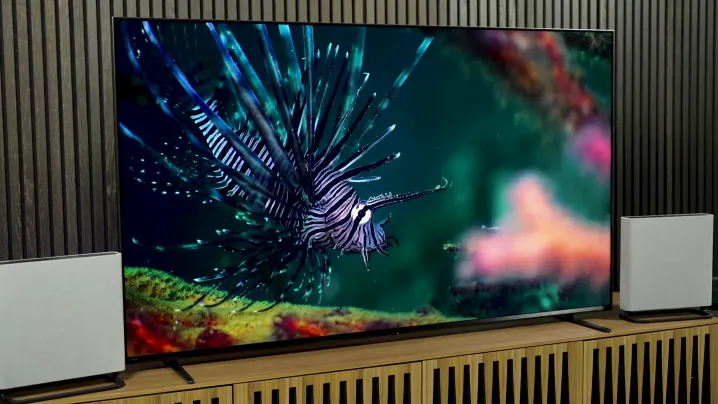
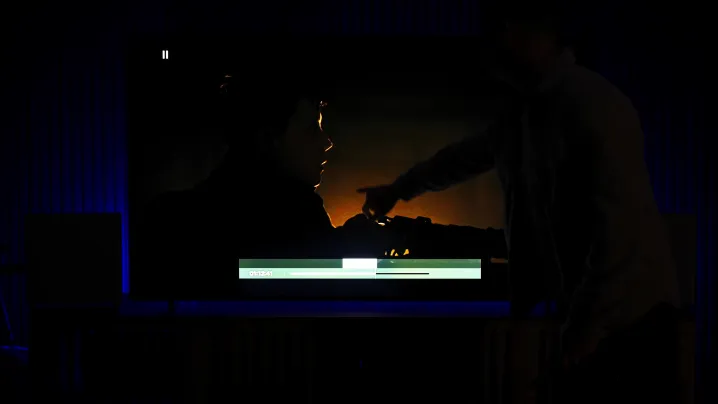


You must be logged in to post a comment Login